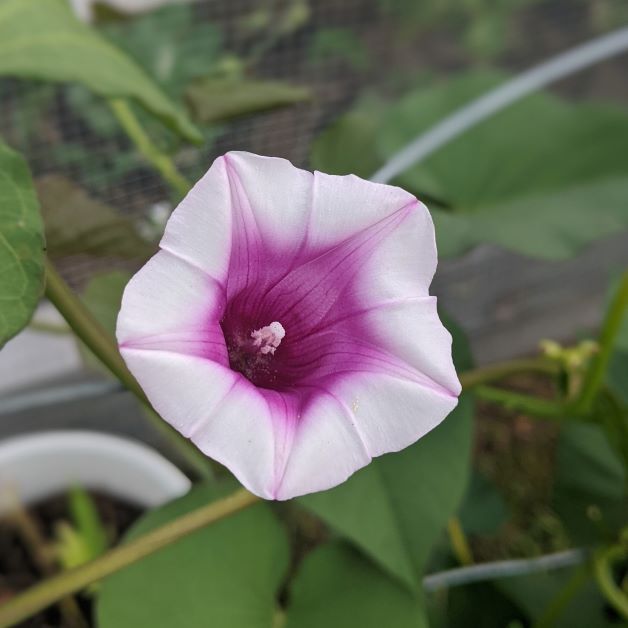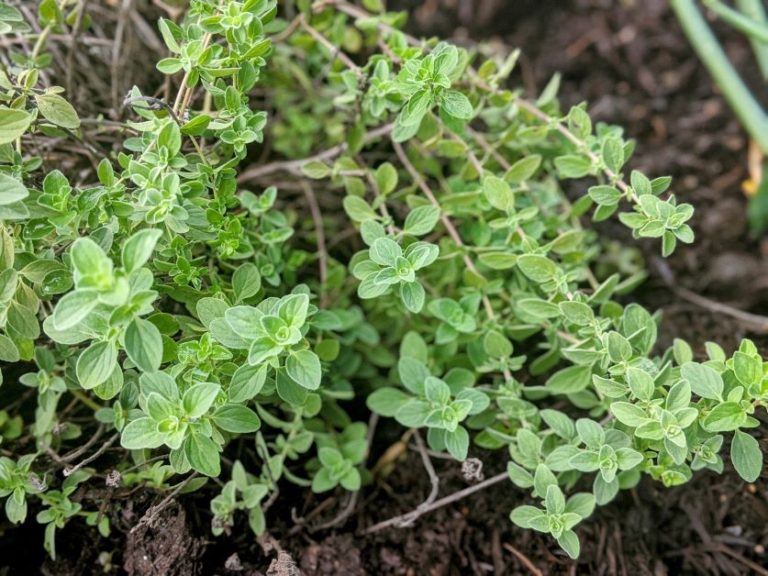How to Grow Sweet Potatoes in Florida
Sweet potatoes (Ipomoea batatas) are tropical plants native to Central and South America. Legend has it that Christopher Columbus brought the sweet potato to North America. Recently, though, scientists have carbon-dated prehistoric sweet potato that existed in Polynesia from A.D. 1000. This would prove that this tuber traveled around the world far before Columbus showed up.
Contrary to their name, sweet potatoes are closer relatives to the morning glory than they are to the traditional potato. This is surprising until you see how much a sweet potato flower looks like a morning glory. Although some people use the name sweet potato and yam interchangeably, sweet potatoes aren’t yams. Yams are their own separate species (Dioscorea).
Science stuff aside, sweet potatoes are one of my must-grow vegetables during Florida’s brutal summer. They’re remarkably low-maintenance, pest-resistant, and thrive in extremely high temperatures. For that reason, I call them a “set it and forget it” crop.

How Do Sweet Potatoes Grow?
Sweet potatoes don’t grow in the same way as traditional potatoes. Although both types of potatoes grow underground, sweet potatoes grow off of their root system and while traditional potatoes grow from their stems.
As the sweet potato plant grows, the roots get fatter in spots. These portions of fat roots are called nodes, and these end up forming into the actual sweet potato.

Where to Grow Sweet Potatoes
Sweet potatoes are hardy in USDA zones 9B through 11. They are a vigorous growing vine that needs lots of space. They also need to be planted deeply so that there’s room under the soil line for the potatoes to form.
As long as it’s big enough, sweet potatoes to great in a raised bed. I plant mine in this hexagonal planter. Hands down, this is the best raised bed for vegetable gardening that I’ve tried so far. They’re deep, sturdy, rust-resistant, and they’re decorative, too. I have 7 in my front yard and I get tons of compliments from my neighbors and passersby.
You can also grow sweet potatoes in the ground. Gardeners in Florida will probably need to amend their native sandy soil with compost if they want to plant sweet potatoes in the ground instead of a bed. If you don’t have compost, you can also use organic 3-3-3 fertilizer.

When to Plant Sweet Potatoes in Florida?
Sweet potatoes are one of the few vegetables that grow during Florida summer. I start my sweet potato plants in mid-May and harvest in late October or early November.
How to Grow Sweet Potatoes in Florida – Plant Care
Temperature
When it comes to sweet potatoes, the hotter the better. Their ideal temperature range is 75F-95F+. On the flip side, sweet potatoes are sensitive to cold and suffer in temperatures as cool as 50F. An established plant can take a few nights of 45F, but not often and definitely not much colder.
Light
Sweet potatoes are a full sun plant that needs at least 8 hours of sun a day.
Water
Sweet potatoes need a moderate amount of water, and young slips need more than established plants. Keep your slip moist but not soggy and once it takes off, you can water less often. Unless you’re growing in drought conditions, 1 inch of water per week should be enough.
As with all of your plants, keep an eye on your sweet potato. If your leaves are wilting and the soil is very dry, then give it some water. Be sure to water the soil and not the leaves so you don’t encourage fungal growth. A water wand hose attachment can help.
Soil
Sweet potato prefers sandy, loamy soil. It’s important that your soil is well-draining and loose. If your soil isn’t well-draining your sweet potatoes will rot. If your soil is too compact, your sweet potatoes will be small. The ideal pH range for sweet potato is 5.8-6.0.
Fertilizer
Unless your soil is very poor, your sweet potato shouldn’t need much fertilizer. Overfeeding your sweet potato will cause them to grow a ton of greens but small tubers. If you do need to feed, use a fertilizer low in nitrogen like organic bone meal.
How to Plant Sweet Potatoes in Pots

What you’ll need:
- Organic sweet potatoes
- 1-gallon pots
- Soil
- Perlite
One of the coolest things about growing sweet potatoes is that you don’t need to buy seeds – just get some organic sweet potatoes from your grocery store. The organic part is important. Non-organic potatoes are sprayed with a growth inhibitor and won’t sprout.
Directions:
- Fill your pots with a 70/30 mix of potting soil and perlite.
- Bury a sweet potato two-thirds of the way in, leaving the top of the potato exposed. Each pot will take one potato and grow one plant.
- Water the potato in.
- Keep your potato pot in a warm, sunny spot and water it regularly. Keep it moist but not soggy — overwatering will cause the potato to rot.
- After a few weeks, your potato will start growing leaves and small vines.
- When you start seeing strong leaf growth on your potato, it’s time to transplant it into the ground or raised bed.
- When transplanting, gently remove the sweet potato from your pot, taking care not to disturb the roots and leaves. Bury the potato in its permanent spot up until where the leaves are forming.
- Don’t overcrowd the potatoes – plant them about 12 inches apart.
- Once you’ve planted your potatoes, water them in.
How to Grow Sweet Potatoes from Slips

If you buy sweet potato plants online or at a nursery, they will most likely be slips. A slip is a piece of the sweet potato vine that is no longer connected to the potato.
Growing sweet potatoes from a slip is simple – just plant the bottom of your slip about three inches into the ground or raised bed and water it in. Space your slips about 12 inches apart.
Are Sweet Potato Leaves Poisonous?
Unlike traditional potato leaves, sweet potato leaves aren’t poisonous. The entire sweet potato plant is edible including the leaves, slips, and flowers. I almost like the leaves better than the tubers. They’re tender and remind me of a less slimy version of spinach. I like to eat them sauteed with butter, salt, and pepper. Young leaves are also good in salad. The best thing about sweet potato greens is that they’re available all summer when most other greens are dead or bolting.
When to Harvest Sweet Potatoes

I look forward to harvesting my sweet potatoes all summer long, and not just because homegrown sweet potatoes are so delicious. Digging for sweet potatoes is a lot like looking for buried treasure.
Depending on the variety, it’ll take your sweet potatoes 90 to 170 days before they’re ready for harvest. With my replanted store-bought sweet potatoes, I wait at least 5 months before I dig them up. Any earlier and the tubers are a little small. When it starts getting cold at night and my sweet potato leaves start looking unwell, I know it’s time to harvest.
If you want to test how big your tubers are before harvesting, feel around under the soil while leaving the vines intact. Find a few potatoes and check how big they are by feel. If they’re big enough for your liking, it’s time to harvest.
To harvest your sweet potatoes, pull up the vines first and pick any leaves that you’d like to eat later. After the vines are ripped up, start digging around and you’ll find roots and tubers. Some roots will be too skinny to save but you should be able to harvest 3-5lbs of sweet potatoes per plant.
Curing Sweet Potatoes
Sweet potatoes have to be cured before they’re ready to eat because it takes time for the starches in the sweet potato to turn to sugar. If you eat a sweet potato right after harvest, it’ll be rather tasteless.
Store your freshly harvested, unwashed sweet potatoes for at least two weeks in a dark, warm, humid spot. You should aim to cure your sweet potatoes in at least 85F temperatures. Much cooler and your sweet potatoes might rot instead of cure.
What Vegetables Grow Well in Florida Summer?
For more information on what vegetables can take the tropical summer heat, check out 18 Best Greens to Grow in Florida and 5 Vegetables You Need to Grow in Florida Summer.







